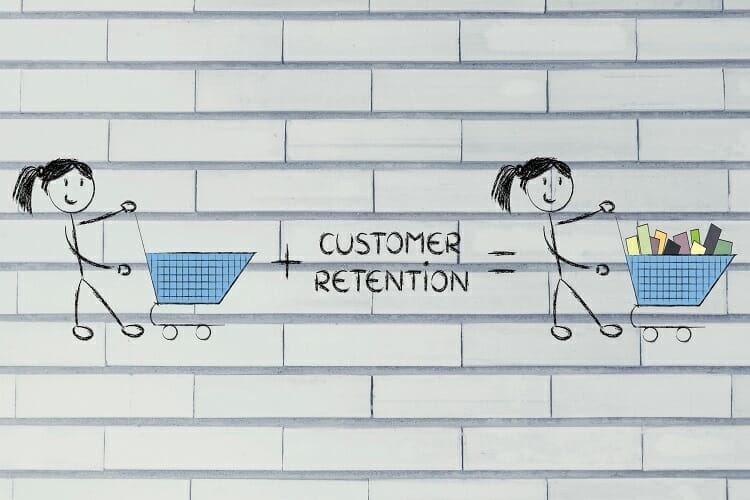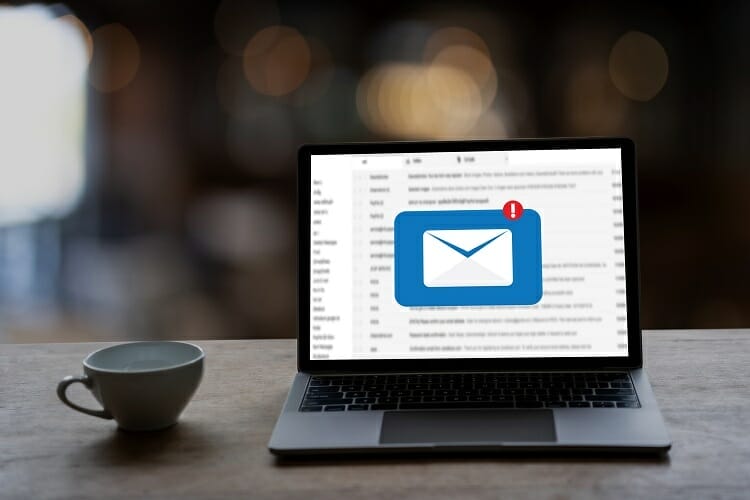Productivity, Dropshipping, Entrepreneurs, Marketing, Online Business
Revamp Customer Loyalty with These Winning Strategies for 2024
- By Moshe
- No Comments
13 Aug

Revamp Customer Loyalty with These Winning Strategies for 2024
In today’s dynamic ecommerce landscape, the race for customer acquisition often overshadows an essential aspect of long-term success – retaining existing customers. As an online shop owner, you know that gaining a new customer can be five times more expensive than keeping an existing one. But what does it mean to retain customers, and why is it essential to focus on customer retention in 2024?
Importance of Gaining Return Customers
Customer retention is not just about making a one-time sale. It’s a continuous process of engaging customers, ensuring satisfaction, resisting competitors, and making them brand advocates. Retaining customers increase trust, raises order values, boosts profits, and allows word of mouth to flourish. Long-term clients explore more products, and the cost of selling to them is significantly lower, leading to rapid growth and higher profitability. A mere 5% increase in retention rate can drive substantial profits, demonstrating the paramount importance of focusing on repeat buyers.
A Brief Overview of Changing Customer Behavior
The way customers interact with brands is continually evolving. Personalization, trust-building, convenience, fast delivery, and green packaging are just a few of the aspects that have become increasingly significant to modern consumers. For example. from the way Santa Cruz Bicycles used tools for improved support to how Starbucks empowers customers through its Mobile Order & Pay, it’s evident that a brand must adapt its strategies to fit changing consumer behaviors.
Today’s customers value personalized shopping experiences, ethical considerations, and easy returns. Strategies such as creating memorable unboxing experiences or using green packaging can lead to satisfaction and retention.
Introduction to Strategies for Retaining Customers
As we move further into the year, it becomes vital for online retailers to refine and adapt their retention strategies. From enhancing customer support, initiating loyalty programs, and collecting customer feedback to focusing on fast delivery and easy returns, there’s a rich landscape of tactics and strategies to explore.
Key strategies include data-driven marketing for personalization, utilizing CRM tools, implementing referral programs, and prioritizing order accuracy. High-value purchases may benefit from different strategies, and store lifecycle determines the emphasis on acquisition versus retention.

Provide Exceptional Customer Service
Importance of Swift Responses
Customer service efficiency is paramount in maintaining customer satisfaction and loyalty. Swift responses are a crucial aspect of this, reflecting positive customer service. When customers receive timely support, it creates a sense of care and understanding in the company. Round-the-clock availability and fast responses, in particular, are key aspects that make customers feel valued and cared for.
Ways to Exceed Customer Expectations
1. Positive Attitude: Staying calm and ensuring authenticity in customer interactions enhances customer experiences. Empathizing with customers, using positive language, and focusing on their needs and desires can lead to a more pleasant and efficient service, boosting customer loyalty.
2. Offering Incentives: Businesses should consider revamping their processes, offering free shipping, easy returns, and other incentives that cater to customer desires. A genuine smile, interest, and open-mindedness to understand customer needs beyond spoken words also play a vital role.
3. Enhanced Experiences through Collaboration: Creating an energized work environment encourages cooperation, teamwork, and timely support within an organization. Treating employees and customers with kindness ensures positive experiences and boosts accountability.
4. Customer Retention Strategies: Positive attitude improves customer retention through intelligent content and repeat business. Courtesy, willingness to serve, and empathy form the basis of a positive customer service attitude that attracts and retains customers, leading to higher sales
Tools and Strategies for Maintaining Service Quality
Maintaining service quality requires a strategic approach that encompasses various tools and strategies:
1. Positive Language and Proactive Approaches: Addressing customer needs positively and enhancing experiences contributes to pleasant and efficient service.
2. Understanding Customer Perspectives: This reduces anxiety and enables better handling of emotions, ensuring that the service quality is maintained at all times.
3. Empathy and Open-Mindedness: These are essential tools that help in understanding customer needs beyond spoken words and reflect care and empathy.
4. Prioritizing Customer Interests: A positive attitude that puts customers first drives satisfaction and enhances overall company success. The focus on quality ensures that everyone strives for excellence and fairness, continually improving service quality.
Personalization Tactics
Customizing Marketing and Interactions
Personalization in marketing and customer interactions is a growing trend that allows businesses to connect with customers on a more individual level. By offering tailored content, promotions, and services, companies can enhance customer engagement and loyalty. This customization may include:
- Personalized Emails: Utilizing customer names, past purchase history, and interests in email campaigns.
- Recommendation Engines: Implementing algorithms that analyze user behavior to suggest relevant products or content.
- Tailored Customer Service: Training customer service representatives to recognize individual customer needs and preferences, thus offering more personalized support.

How to Leverage Customer Data Effectively
Leveraging customer data for personalization requires a strategic approach. Here are some key steps to consider:
- Data Collection: Gathering detailed information about customers, including their preferences, behaviors, and interaction history.
- Data Analysis: Utilizing analytics tools to identify trends and patterns that can provide insights into individual customer needs.
- Segmentation: Dividing customers into specific groups based on shared characteristics or behaviors to target them more effectively.
- Compliance and Security: Ensuring that the handling and usage of customer data comply with legal regulations, such as GDPR, and implementing robust security measures to protect privacy.
- Continuous Monitoring and Adjustment: Regularly reviewing and updating personalization tactics to remain relevant and engaging.
Loyalty Programs
Loyalty programs have evolved to meet the diverse needs of businesses and customers. Different types of loyalty programs are employed by companies to engage, retain, and reward their customers. Here are some prominent types:
- Earn & Burn: A traditional model where customers earn points and redeem them for rewards or discounts.
- Tiered Programs: These offer different levels of rewards based on customer loyalty or spending, incentivizing continued engagement.
- Gamified Programs: Incorporating game-like elements to make the loyalty experience more engaging and fun.
- Influencer Programs: These leverage influencers or brand ambassadors to promote the brand and offer specific rewards.
- Mission-Driven Programs: Aligning with community and social goals, like Baron Fig‘s tree-planting initiative and community programs to enhance loyalty.
- Small Business Programs: Utilizing punch cards, opt-in emails, free trials, partner programs, and referrals to foster loyalty.
Designing a Program that Fits Your Business
When designing a loyalty program, aligning it with the business’s goals and the customers’ values is essential. Here’s a guide to creating a tailored loyalty program:
- Understand Your Customers: Knowing customers improve experiences and allow for standout rewards and personalized offers.
- Choose the Right Type: Selecting a program type that fits the industry and customer base is crucial. Types can range from financial rewards to social media engagement.
- Balance Rewards: Points systems should balance value and earning speed, and valuable rewards like cashback can drive enrollment.
- Implement Technology: Platforms like Xoxoday Plum, Yotpo, and LoyaltyLion can aid in implementing and managing the program efficiently.
- Emphasize Emotional Connections: Modern programs should focus on personalization, experiences, and building emotional connections.
- Ensure Simplicity and Reliability: Keeping the program simple and reliable builds trust, as seen in Woolworths’ Everyday Rewards program.
Follow-Up and Engagement
The success of an e-commerce business doesn’t merely rely on the purchase; it continues well after the transaction is complete. This entails building a strong follow-up and engagement strategy that nurtures a long-term relationship with customers. Here’s a detailed look at the essential components:
Importance of Post-Purchase Interaction
The post-purchase experience in eCommerce is essential, yet often neglected in favor of new customer acquisition. However, enhancing post-purchase interactions is vital for cultivating customer advocacy and expanding the customer base. A comprehensive post-purchase strategy must focus on creating personalized delivery experiences, fostering online communities, integrating omnichannel support, and establishing robust loyalty programs. These initiatives drive engagement, satisfaction, and customer retention.

Email Strategies
Email marketing plays a critical role in post-purchase engagement. It offers a high return on investment, with some reports showing a $42 return for each $1 invested. Post-purchase emails enhance customer relationships by offering trust, information, and loyalty building. Various approaches can be employed, such as:
- Transactional Emails with Personality: Unique emails filled with gratitude stand out and enhance customer satisfaction
- Customization and Personalization: Tailoring emails based on individual needs and preferences lead to higher sales and customer satisfaction.
- Surveys and Feedback Mechanisms: Employing survey emails allows for direct feedback and potential referrals, which can be vital in enhancing customer relations.
- Segmentation: Effective segmentation through CRM software improves email performance, including open rates, revenue, and more.
Email marketing also aids in re-engagement with inactive customers and helps build brand awareness, thereby driving conversions, sales, and loyalty.
Engagement with New Arrivals and Sales
Engagement with new arrivals and sales involves crafting strategies that appeal to customers’ needs and interests. Creating online communities, offering exclusive access, and surprising top customers with personalized notes, gifts, or special coupons can be particularly effective. Upselling and cross-selling strategies, powered by personalized product recommendations, further enrich post-purchase interactions and promote ongoing engagement.
E-commerce businesses can convert new customers into loyal advocates, foster lasting relationships, and secure a continuous revenue stream. The aim is to go beyond mere transactions and create an ongoing conversation that resonates with customers and keeps them coming back for more.
Quality Products and Services
In the competitive world of e-commerce, providing quality products and services is paramount. This delves into the multi-faceted aspects that contribute to maintaining and elevating the quality standards in an e-commerce environment.
Ensuring Product Quality
Ensuring product quality is the cornerstone of building trust with customers. It goes beyond merely meeting specifications and involves delivering products that truly satisfy the needs and preferences of consumers. In the context of e-commerce, this entails clear product descriptions, accurate imagery, adhering to established standards, and providing comprehensive information about the features and benefits of the product.
Transparency in sourcing, materials used, and the manufacturing process also builds credibility. Implementing a robust quality management system ensures consistency and helps in identifying potential issues before products reach customers. Moreover, personalized delivery experiences can enhance the overall perception of quality, by aligning the product delivery with the reasons for purchase.
Aligning Services with Customer Expectations
The service component in e-commerce is just as vital as the product itself. Aligning services with customer expectations requires a profound understanding of what customers truly desire. This alignment can be achieved through various means, including customer feedback, surveys, and direct interaction. Creating online communities, offering omnichannel support, and prioritizing post-purchase experience all contribute to a service culture that resonates with customers’ needs and expectations.
Personalization in service delivery, such as customized shipping confirmation emails and exclusive access to certain products or sales, adds to the unique experience that caters to individual preferences. Furthermore, integrating responsiveness and personalization in email strategies enhances the connection with customers, contributing to a more tailored and satisfying service experience.
Quality Control Measures
Quality control in e-commerce is a systematic process that ensures that products and services meet predefined standards. This encompasses a series of inspections, testing, and procedures that verify the integrity and quality of the products. In addition to regular monitoring of the manufacturing process, e-commerce businesses must implement clear guidelines for handling returns and refunds to ensure that any quality-related issues are addressed promptly and fairly.
Leveraging technology such as CRM software for segmentation and tracking can also aid in quality control by providing valuable insights and data. Constantly analyzing customer feedback and taking corrective actions based on the insights can lead to continuous improvement in quality standards.
Advanced Strategies
Businesses need to stay ahead of the curve by employing advanced strategies that go beyond traditional methods. Let’s explore the various elements that make up these sophisticated approaches.
Surveys and Feedback
Understanding what the customers feel, desire, and expect is vital in any industry, more so in e-commerce where personal interactions are minimal. Surveys and feedback tools facilitate gathering insightful data from customers. They help in identifying their preferences, understanding their pain points, and gauging their satisfaction levels.
Post-purchase surveys, like Net Promoter Score surveys, can be employed to get feedback and even offer incentives for participation. The process doesn’t end with collecting data; acting on the survey results is critical in enhancing customer relationships and addressing concerns.
Social Media Engagement
Social media is not just a platform to share content but a dynamic space to engage with customers. Creating online communities, sharing user-generated content, and being responsive to comments and messages build a vibrant brand presence. Social sharing can be prompted through follow-up emails, and customers can be rewarded with incentives, thus fostering engagement.
In-Store/Online Experience
Bridging the gap between in-store and online experience creates a seamless customer journey. Omnichannel support that centralizes customer communication and focuses on consistency and personalization ensures that the experience is uniform across different touchpoints.
Social Proof
Leveraging reviews, testimonials, and user-generated content serves as social proof, enhancing the credibility of the brand. Social proof acts as a validation from peers and encourages others to trust the brand and its products.

Exclusive Content
Offering exclusive content such as personalized notes, early access to sales, gifts, or special coupons to top customers builds loyalty and adds a unique touch to customer engagement.
Partnerships and Collaborations
Collaborating with other brands or influencers creates new avenues for exposure and engagement. Partnerships open doors to new audiences and allow brands to offer something unique to their customers.
Solicit and Act on Feedback
Asking for feedback isn’t enough; businesses must also act on it. Analyzing and implementing changes based on customer feedback drives continuous improvement and demonstrates that the company values customer opinions.
Continuous Improvement
In the fast-paced world of e-commerce, resting on laurels is not an option. Continuous improvement is about persistently evaluating processes, products, and customer interactions and making data-driven decisions for ongoing enhancements.
Marketing Approaches
The world of marketing is multifaceted and constantly evolving. Implementing a blend of traditional and modern marketing strategies ensures that a business can reach its audience in various effective ways. Here’s an exploration of several of these marketing approaches:
Multi-Channel Engagement
Reaching customers through multiple channels like email, social media, in-store interactions, and online ads ensures a cohesive and consistent brand message. By meeting customers where they are, multi-channel engagement maximizes reach and enhances the customer experience.
Segmented Marketing Campaigns
Not all customers are alike. Segmented marketing campaigns recognize this by targeting specific segments of the customer base with tailored messages. By focusing on individual needs, interests, and behaviors, segmented campaigns yield higher engagement and conversion rates.
Customer Feedback Incorporation
Incorporating customer feedback into product development and marketing strategies ensures the company is aligned with customer needs and expectations. This approach fosters trust and shows that the company values customer input.
Limited-Time Offers
Limited-time offers create urgency and excitement. By offering special discounts or exclusive products for a short period, businesses can drive sales and increase customer engagement.
Referral Programs
Referral programs encourage satisfied customers to spread the word about the brand, often in exchange for rewards. This word-of-mouth marketing can be a powerful driver of new business.
Interactive Content
Interactive content like quizzes, calculators, and interactive videos engages customers more deeply than static content. It offers an immersive experience and often provides personalized insights or recommendations, increasing user engagement.
Subscription Services
Subscription services provide ongoing value and create a consistent revenue stream. From monthly product boxes to content subscriptions, these services enhance customer retention and create opportunities for cross-selling and upselling.

Cross-Selling and Upselling
Cross-selling promotes complementary products, while upselling encourages customers to purchase a more expensive version of an item. Both strategies increase the average order value and can enhance customer satisfaction when done thoughtfully.
Social Responsibility Initiatives
Brands that align themselves with social causes resonate with many consumers today. Social responsibility initiatives can strengthen brand identity and foster loyalty among socially-conscious customers.
Seasonal and Holiday Campaigns
Seasonal and holiday campaigns tap into the existing momentum of various times of the year. Tailored promotions or themed products can create buzz and boost sales during key shopping periods.
Content Marketing
Content marketing involves creating valuable, relevant content to attract and engage a target audience. Blogs, videos, podcasts, and infographics are some of the tools that can be used to educate and entertain customers, building trust and authority in the process.
A/B Testing
A/B testing allows marketers to compare two versions of a webpage or app against each other to determine which one performs better. This data-driven approach helps in optimizing the conversion rate and enhancing user experience.
Exclusive Membership
Offering exclusive memberships with perks such as free shipping, special discounts, or early access to products can foster loyalty and provide a steady revenue stream.
Localized Marketing
Localized marketing tailors marketing efforts to local cultures, customs, and tastes. Whether adjusting products, promotions, or advertising, this approach ensures that the marketing is relevant and resonant within specific geographic areas.
By employing these multifarious strategies, brands can engage with their customers in meaningful ways, adapt to changing trends, and foster growth in an increasingly competitive market. The combination of these strategies, when aligned with the brand’s core values and customer needs, creates a robust marketing ecosystem that drives success.
Conclusion
Revamping customer loyalty is an essential goal for success in 2024, and the winning strategies outlined in this article pave the way. Embrace these methods with enthusiasm and commitment to foster deeper connections with your customers. The future of your brand’s loyalty and growth begins with taking action today.
Ready to elevate your dropshipping business to new heights? Importify is created with love, specifically for Dropshippers like you. Easily import products into your eCommerce store and fulfill orders with just a few clicks. Take action today and transform your dropshipping experience. Start Using Importify Now!
Helping thousands of people to automate their dropshipping business. Skilled in Marketing Management, Advertising, and eCommerce.
Recent Posts
 Successful Dropshipping Techniques To Succeed In Dropshippin…April 15, 2024
Successful Dropshipping Techniques To Succeed In Dropshippin…April 15, 2024 5 Best Practices For Effective Inventory ManagementApril 8, 2024
5 Best Practices For Effective Inventory ManagementApril 8, 2024 How Many Products Should I Start With Dropshipping?April 7, 2024
How Many Products Should I Start With Dropshipping?April 7, 2024 Know the Best Product Research Tools for DropshippingApril 4, 2024
Know the Best Product Research Tools for DropshippingApril 4, 2024 Wix Dropshipping: The Ultimate Guide to Starting a Thriving …April 3, 2024
Wix Dropshipping: The Ultimate Guide to Starting a Thriving …April 3, 2024





Moshe